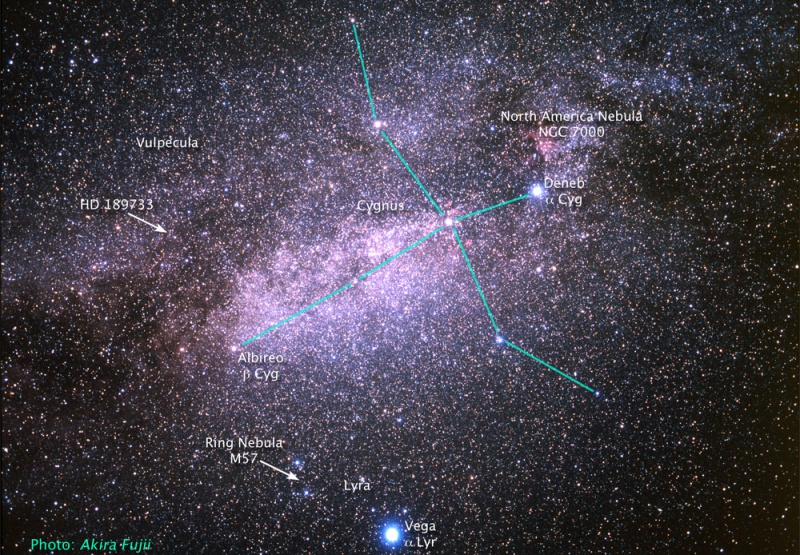Explanation: The star cataloged as HD 189733 is a mere 63 light-years away. Its location is indicated in this deep, wide-angle image of the sky centered on the northern constellation of Cygnus. Considering the many bright stars, nebulae, and star clusters in the region more familiar to skygazers, HD 189733 may not seem to be remarkable, but it is known to have at least one hot, jupiter-sized planet orbiting very close, with an impressively short period of 2.2 days. Because the planet regularly eclipses its parent star, astronomers can study starlight that passes directly through the planet's atmosphere and identify molecules through spectroscopy. Following the discovery of water vapor in the planetary atmosphere, astronomers now report that Hubble Space Telescope data also indicates the signature of methane (CH4). The exciting result is the first detection of an organic molecule on a planet orbiting another star. Although HD 189733's planet is considered too hot and inhospitable to support life, the work is a step toward measuring conditions and chemistry on other extrasolar planets where life could exist.
1999 2000 2001 2002 2003 2004 2005 2006 2007 2008 2009 2010 2011 2012 2013 2014 2015 2016 2017 2018 2019 2020 2021 2022 2023 2024 2025 |
Yanvar' Fevral' Mart Aprel' Mai Iyun' Iyul' Avgust Sentyabr' Oktyabr' Noyabr' Dekabr' |
NASA Web Site Statements, Warnings, and Disclaimers
NASA Official: Jay Norris. Specific rights apply.
A service of: LHEA at NASA / GSFC
& Michigan Tech. U.
|
Publikacii s klyuchevymi slovami:
extrasolar planet - ekzoplaneta
Publikacii so slovami: extrasolar planet - ekzoplaneta | |
Sm. takzhe:
Vse publikacii na tu zhe temu >> | |
